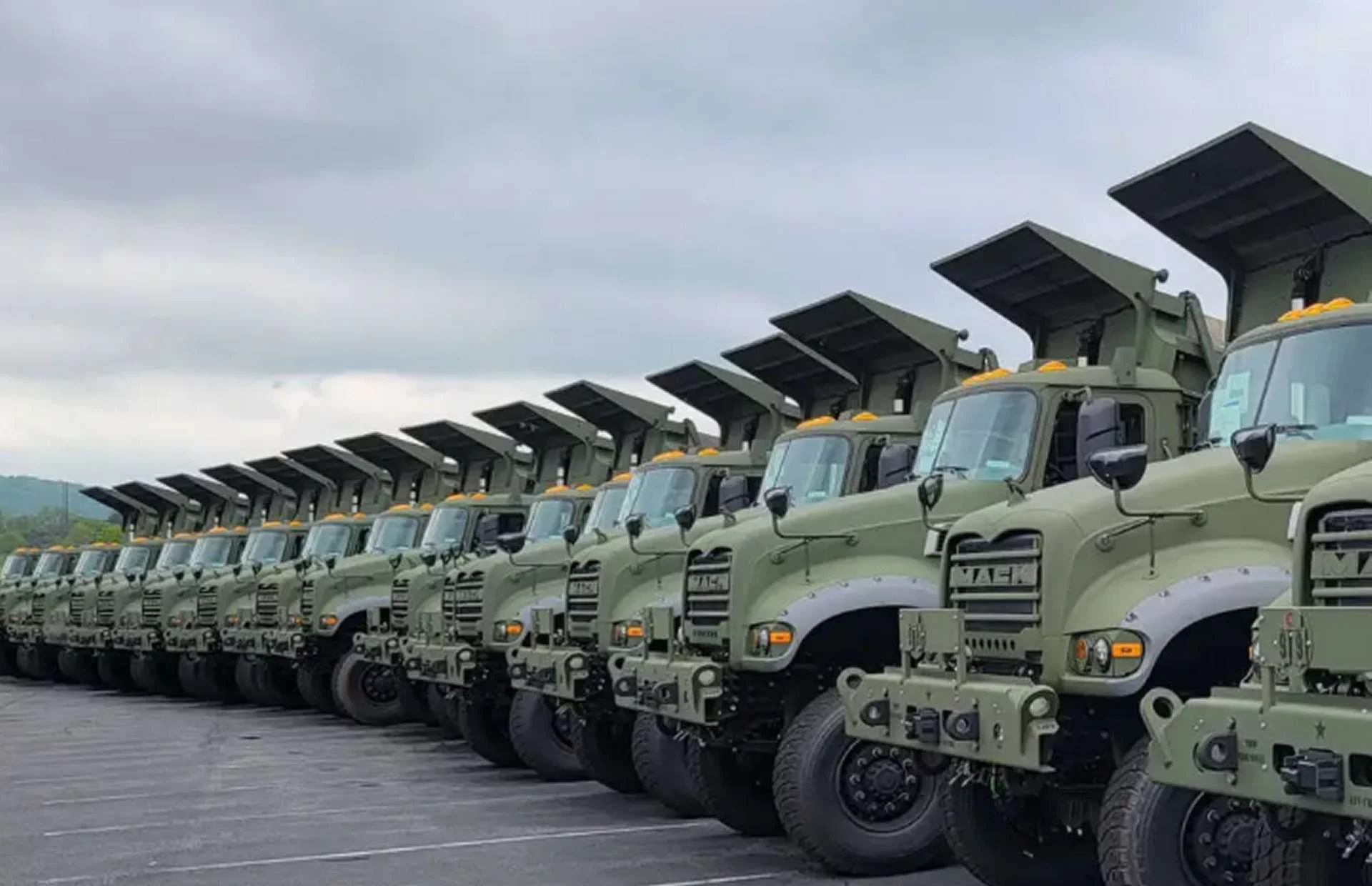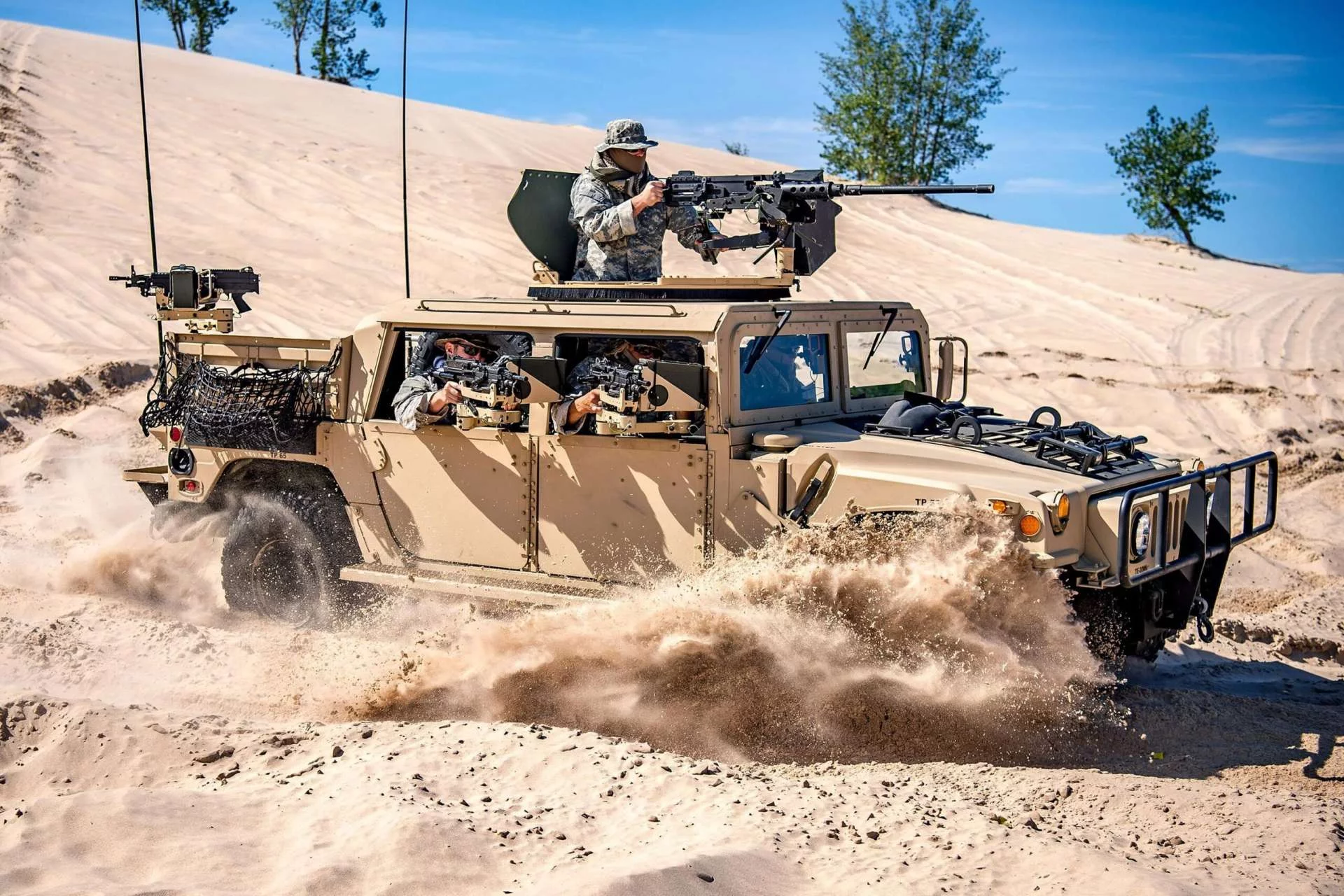In a move that’s got defense insiders buzzing like a hive of caffeinated hornets, the U.S. Army has just inked a blockbuster deal that’s straight out of a Michael Bay fever dream. We’re talking 86 hulking M917A3 Heavy Dump Trucks rolling off the assembly line from Mack Defense, all under a jaw-dropping five-year program valued at up to $221.8 million. That’s right—over two hundred million bucks for what amounts to a fleet of earth-shattering workhorses designed to bulldoze through war zones like they’re made of Play-Doh. But hold onto your helmets, because this isn’t just about buying big rigs; it’s a strategic masterstroke in an era where great-power showdowns loom larger than a Abrams tank. As the calendar flips to October 2025, with tensions simmering from the Indo-Pacific to Eastern Europe, these bad boys could be the unsung heroes keeping America’s boots marching forward. Dive in with us as we peel back the layers on this colossal contract, from gritty specs to game-changing implications.
The Deal That’s Shaking Up the Defense World
Picture this: It’s October 7, 2025, and just days before the annual Association of the United States Army (AUSA) expo lights up Washington D.C. like a fireworks finale, Mack Defense drops a bombshell announcement. The U.S. Army, ever the pragmatic powerhouse, has placed an initial order for 86 M917A3 Heavy Dump Trucks. But here’s the kicker—this is merely the opening salvo in a sprawling five-year indefinite delivery, indefinite quantity (IDIQ) contract that could balloon to a whopping 450 vehicles. Funded straight from the Department of Defense’s fiscal 2025 budget, this $221.8 million powerhouse of a program isn’t some pie-in-the-sky wish list; it’s the real deal, succeeding a seven-year production sprint that kicked off back in 2018.
What makes this order sing? For starters, it was greenlit on June 24, 2025, when the Army handed Mack Defense the golden ticket—a fresh contract to keep the production lines humming. Assembly? That’s happening right here in the heartland, at Mack’s state-of-the-art facility in Allentown, Pennsylvania. After pumping in multi-millions for a dedicated production line, Mack isn’t messing around. This setup isn’t just about cranking out trucks; it’s a nod to revitalizing American manufacturing muscle, ensuring that every bolt and beam is forged on U.S. soil. In an age where supply chain snarls can derail entire operations, having a domestic powerhouse like this is like having a fortified bunker for your logistics backbone.
But let’s zoom out for a second. This contract arrives at a pivotal moment for the Pentagon. With budgets under the microscope and procurement priorities juggling everything from hypersonic missiles to AI-driven drones, the Army’s choice to double down on heavy dump trucks might seem like a plot twist. Yet, it’s anything but. These vehicles are the gritty glue holding together the Army’s engineer regiments—the unsung squad that turns shattered runways into launchpads and debris-choked roads into highways of advance. As climate weirding amps up severe weather disruptions and peer adversaries like China and Russia hone their asymmetric warfare chops, the need for rapid-response earthmovers has never been more acute. This order? It’s the Army betting big on resilience, one ton of payload at a time.
Under the Hood: Decoding the M917A3’s Beastly Blueprint
If the M917A3 were a superhero, it’d be the Hulk of the haulage world—unassuming at first glance but capable of flipping tanks for fun. Built on the rock-solid Mack Granite chassis, this militarized marvel starts life as a commercial-grade beast before getting the full tactical makeover. We’re talking all-wheel drive that laughs at mud pits, heavier-duty axles that shrug off overloads, a raised suspension that turns pothole-riddled battlefields into smooth cruises, and— for those extra-spicy missions—optional force-protected cabs that could double as mobile bunkers.
Powering this colossus is a 13-liter MP8 diesel engine, churning out a spine-tingling 440 horsepower and a torque tidal wave of 1,660 pound-feet. Mated to an Allison 4500 six-speed automatic transmission, it’s a symphony of shove that ensures these trucks don’t just move dirt—they conquer it. The real magic, though, lies in the 8×8 drivetrain: a transfer case and powered steer axle combo that delivers stratospheric tractive effort and rock-steady stability on terrain that would send lesser vehicles into therapy. Mack’s engineers have jacked up the ride height and ruggedized every component, from the frame to the fittings, to endure the relentless grind of off-road ops. Think persistent pounding over broken ground, day in, day out, without so much as a whimper.
Specs-wise, the M917A3 boasts a gross vehicle weight rating (GVWR) hovering around 94,500 pounds, with an on-road payload capacity that tips the scales at roughly 27 tons. Slap on an armored cab, and you’re looking at a slight trim—about 2.5 tons lighter to account for the extra plating—but the trade-off is worth every ounce for crews operating in hot zones. The chassis itself is a set-forward-axle Granite frame, featuring a beefy 300 by 90 by 11.1-millimeter double-channel steel mainframe paired with high-capacity Meritor axles. And because the Army doesn’t do half-measures, they’ve layered in modern bells and whistles: anti-lock braking systems (ABS) for superior stopping power on gravel or ice, intuitive control interfaces that feel like they’re from a video game, and active safety features borrowed from Mack’s civilian lineup. These aren’t just trucks; they’re smart, survivable workhorses that predict and prevent mishaps before they happen.
Off-road? This thing’s a monster. The elevated suspension lets it ford streams, climb inclines that’d make a mountain goat sweat, and traverse soft sands without sinking like a stone. Payload versatility is key too—hauling aggregate for berms, riprap for fortifications, or bulk fill for emergency repairs. In a world where drones and precision strikes can turn infrastructure to rubble in minutes, the M917A3’s ability to sling 50,000 pounds of material over rough terrain could mean the difference between a stalled offensive and a breakthrough surge.
Why These Dump Trucks Are the Army’s Secret Weapon in the Next Big Fight
Let’s cut the jargon: In modern warfare, logistics isn’t sexy, but it’s the oxygen of victory. Missiles grab headlines, but without the engineers to rebuild blasted bridges or clear IED-littered paths, your fancy tech is just expensive scrap. Enter the M917A3, the backbone of the Army Engineer Regiment’s heaviest hitters. These trucks empower platoons to surge forward with mountains of materiel, emplacing defensive berms, abatis barriers, or hasty fortifications at a moment’s notice. Post-strike? They’ll repair runways ravaged by artillery or hurricanes, keeping air wings aloft and troops supplied.
The 8×8 configuration and elevated stance aren’t gimmicks—they’re necessities for the kind of hybrid threats the Army now trains for. Imagine a contested European theater: Russian artillery craters a key supply route, and your engineer unit rolls in under fire, armored cabs shrugging off small-arms chatter while dumping tons of gravel to fill the gaps. Or in the Pacific’s island-hopping scenarios, fording mangrove swamps to stockpile bridging gear. When paired with optional armor, these rigs let crews operate closer to the fight, sustaining the blistering tempo of large-scale combat operations (LSCO) without breaking stride.
Broader strokes? This procurement fits like a glove into the Army’s pivot toward “ruggedized commercial off-the-shelf” (COTS) platforms. Why reinvent the wheel (pun intended) when Mack’s proven Granite line can be tweaked for mil-spec brutality at a fraction of the cost and risk? It’s a savvy play in regenerating a logistics force that’s been lean for too long, all while pumping life into the U.S. industrial base. From Pennsylvania welders to Meritor axle fabs, this contract ripples outward, creating jobs and shoring up domestic supply chains against global disruptions.
And timing? Chef’s kiss. Dropped right before AUSA 2025, it’s a not-so-subtle flex: The Army’s modernization train is chugging along, even as fiscal hawks circle. In an era of great-power competition, where theater infrastructure must spring up overnight—from forward operating bases in Poland to austere airstrips in the South China Sea—heavy dump capacity is as critical as HIMARS or F-35s. Without it, maneuver elements grind to a halt, turning potential routs into quagmires. This order signals commitment: Predictable funding for suppliers, standardized platforms for easier training across active duty and Guard units, and flexibility to spin off variants if threats evolve. It’s logistics warfare, reimagined for the 21st century.
Mack Defense: The Unsung Titan Behind the Curtain
No deep dive would be complete without tipping the hat to Mack Defense, the Allentown-based arm of Volvo Group that’s been quietly forging military legends since World War II. Born from the Mack Trucks legacy—think those iconic bulldog hood ornaments charging through Normandy—their modern ethos blends civilian durability with battlefield grit. That multi-million-dollar investment in a dedicated M917A3 line? It’s not just infrastructure; it’s a testament to their skin in the game, positioning Allentown as a hub for tactical vehicle innovation.
Mack’s secret sauce? Iterative engineering that evolves with user feedback. The Granite platform, already a darling of mining and construction outfits worldwide, gets Army-specific tweaks without losing its commercial soul. This hybrid approach means parts commonality for sustainment—swap a civilian axle in a pinch—and rapid scaling if surge demands hit. As one industry watcher put it (off the record, but we’ll echo it), “Mack doesn’t build trucks; they build unbreakable promises.”
The Road Ahead: What 450 Trucks Could Mean for Tomorrow’s Battlespace
Fast-forward five years: If the program’s ceiling hits 450 units, we’re staring down a transformed engineer fleet. Standardization simplifies everything from boot camp quals to depot overhauls, while the IDIQ structure keeps Mack nimble—pivoting to electric variants or enhanced armor if climate or cyber threats demand it. Tie this to broader Army pushes like Joint Light Tactical Vehicles or Next-Gen Combat Trucks, and you’ve got a cohesive wheeled ecosystem ready for peer fights.
Yet challenges lurk: Budget battles in Congress, evolving threat pics from hypersonics to swarms, and the ever-present talent crunch in manufacturing. Still, with uninterrupted demand from engineer battalions worldwide, this feels like momentum building. As AUSA unfolds, watch for ripple effects—maybe a Mack booth demo crushing concrete like confetti, or whispers of export deals to allies.
In the end, the M917A3 isn’t just steel and diesel; it’s the Army’s bet on American ingenuity to out-haul, out-build, and outlast any foe. In a world of flash and fury, these dump trucks remind us: Wars are won in the dirt, one load at a time.




